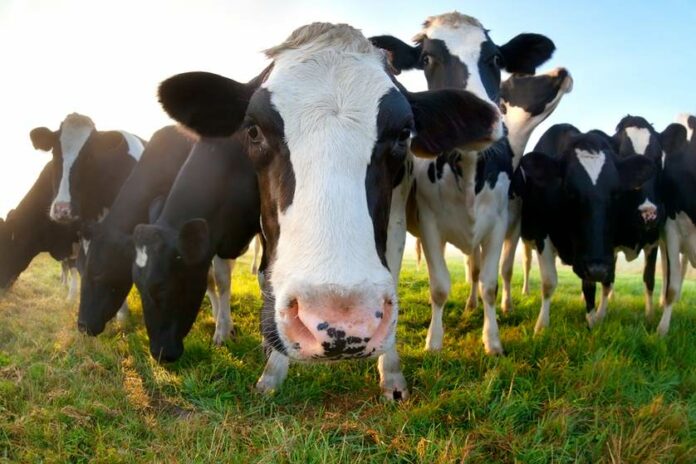Approximately one-fifth of the countries cow herd is made up of dairy cows and 15
to 20% are beef cows.Therefore it is important to understand the comparative value between these breeds. Here are pointers on how to compare them:
1. Study the level of fatness
Do not look at the belly when comparing, instead look at the ribs, the spinal column or “top line” of the animal all the way back to the hips. If the ribs and hips are more prominent in the animal then it’s likely that it is a dairy animal. Don’t confuse emaciated with what is considered the “dairy look.” Beef cattle have other characteristics besides level of fatness or muscularity to distinguish themselves from dairy cattle.
2. Coat colouration
Dairy cattle are actually not emaciated or malnourished, even when they appear that way. Dairy cattle are typically thinner looking because of their breeding. Artificial selection has made them into animals that, genetically, focus on milk production than building muscle and fat. Muscle building and milk production are genetically opposed in most animals, so a producer cannot focus on enhancing one trait without sacrificing the quality of other. This is why you see cattle that have dairy breeding in them with little muscling in the rear and a “thin” look no matter how well they are really being fed.
Beef cattle, unlike dairy cattle, come in a much wider array of coat colourations and patterns than any dairy breed or cross breed can come out with. Beef cattle range from all black to all blonde, red with white, brown with white, all white, grey, mottled, very spotty, and even coats with both red and white hairs . Black is the most popular colour in beef herds today. Dairy cattle can be all black too, just by crossing breeding , however even these cattle will still have the same musculature .
3. Look at the size difference of the udders between dairy and beef cows
Diary cow has a much larger udder than the beef cow. A fully mature beef cow’s udder is almost hidden because it’s both much smaller and often covered in hair, especially with cows that bear winter coats. A dairy cow has been genetically selected to produce almost five to eight times that of your average beef cow. In other words, where a dairy cow will be producing 15 to 20 liters of milk a day, a beef cow typically only produces between 3 to 5 liters per day. That’s quite a difference








